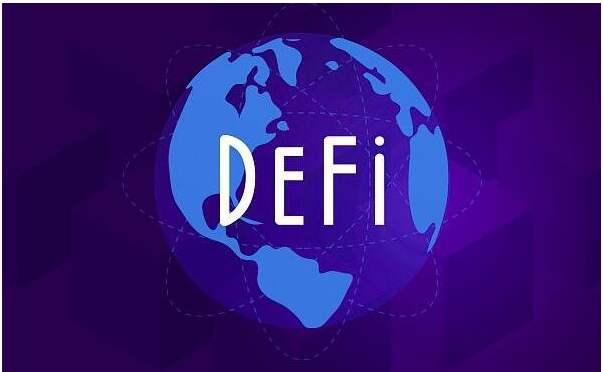Why Thorchain has the opportunity to become a decentralized asset cross-chain exchange layer
This article is from Blue Fox Notes, originally titled "The Iteration of RUNE."
Starting with the cross-chain "Uniswap"
Regarding Thorchain, Blue Fox Notes has introduced it multiple times before. Over the past year, Thorchain has undergone many changes. Thorchain aims to become the cross-chain "Uniswap," a decentralized cross-chain exchange protocol in the crypto space. Users can directly exchange assets from different chains such as BTC, ETH, and BNB without using asset wrapping methods (like wBTC, wETH) but rather through a decentralized approach. Blue Fox Notes previously introduced Thorchain in articles titled "Thorchain: Operating Principles and Token Mechanism" and "Value Capture of RUNE."
RUNE Token Mechanism and Value Capture
Thorchain enables direct cross-chain exchanges and also employs an AMM model with liquidity pools for assets, where each token exchange involves RUNE tokens. When a user exchanges ETH for BTC, it includes a transaction to convert ETH to RUNE and another to convert RUNE to BTC. RUNE serves as the medium of exchange, while Thorchain acts as the decentralized ledger to complete these transactions.
In these cross-chain transactions, Thorchain nodes will verify that one type of asset has been transferred, then authorize the corresponding asset from another chain to be sent to the user's address on that chain. During this verification process, it is crucial to ensure the honesty of Thorchain nodes. To achieve this, nodes must stake RUNE, with the staked amount being twice the total market liquidity. This mechanism can lead to a significant locking of RUNE, thereby ensuring that nodes do not act maliciously.
To make a simple calculation, suppose there is a total of $100 million worth of assets (BTC, ETH, BNB, etc.) in Thorchain's liquidity pool. To form a token pair, an equivalent value of $100 million in RUNE must be allocated. This is not the end; additionally, nodes in Thorchain need to stake more than twice the amount of RUNE, which means $200 million worth of tokens. Thus, $100 million of liquidity assets would correspond to locking $300 million worth of RUNE assets.
Now, if we assume that Thorchain's liquidity pool reaches the current level of Uniswap, which is around $8 billion, this means that at least $24 billion worth of RUNE would need to participate in its network, not including non-staked RUNE. In other words, if Thorchain has the opportunity to reach the current liquidity of Uniswap, logically, its market value would be higher than that of Uniswap (which is currently around $20 billion).
Of course, this is predicated on the condition that Thorchain's liquidity must reach the scale of Uniswap. Therefore, how high RUNE can go mainly depends on the scale of its liquidity. Currently, Thorchain is in the early stages of operation. For safety, Thorchain has limited the liquidity cap of its multi-chain Chaosnet, and if this cap is lifted in the future, it could lead to increased demand for RUNE. Currently, the assets supported for exchange by Thorchain include ETH, SUSHI, YFI, USDT, BTC, BNB, LTC, BCH, ALPHA, and more.
As Thorchain develops, it can also introduce assets from more chains, such as Polkadot, Doge, ETC, LTC, etc.
In this structure, Thorchain balances between liquidity providers and nodes. Under the current mechanism, two-thirds of all locked RUNE is staked by nodes, while one-third is locked in liquidity provision. When nodes stake too little RUNE, block rewards and transaction fees will skew towards the nodes; when nodes stake too much RUNE, block rewards and transaction fees will skew towards liquidity providers.
 (The balance structure of Thorchain)
(The balance structure of Thorchain)
Thorchain and the Cross-Chain Exchange Layer for Crypto Assets
The Thorchain protocol not only develops its own cross-chain DEX but can also provide cross-chain services for other crypto applications. For example, the current crypto exchange ShapeShift has integrated Thorchain, allowing users to perform direct cross-chain token exchanges. Previously, users had to go through centralized exchanges or tokenized cross-chain models to exchange BTC for ETH, but now it can be completed directly through the Thorchain protocol.
 (ShapeShift integrates the Thorchain protocol)
(ShapeShift integrates the Thorchain protocol)
Additionally, the XDEFI wallet also plans to integrate Thorchain. As more exchanges and wallets integrate the Thorchain protocol, there is a chance for Thorchain to become the decentralized asset cross-chain exchange layer in the crypto space.
ThorFi and More Possibilities
 (The framework of ThorFi)
(The framework of ThorFi)
As shown in the image, ThorFi plans to expand the territory of Thorchain. In addition to decentralized cross-chain exchanges, it also plans to introduce lending, synthetic assets, leveraged trading, and more. When users deposit Layer 1 assets (BTC, ETH, LTC, etc.), as liquidity providers, they can earn various fees: block rewards, lending yields, token pool curation fees, synthetic asset generation fees, and other incentives. Moreover, their LP positions can be reused to generate more returns.
In other words, ThorFi aims to enter the entire DeFi space. Its essence is to improve the utilization of assets within its ecosystem, bringing more returns to liquidity providers. This will promote more liquidity to enter, thereby capturing more value for RUNE.










